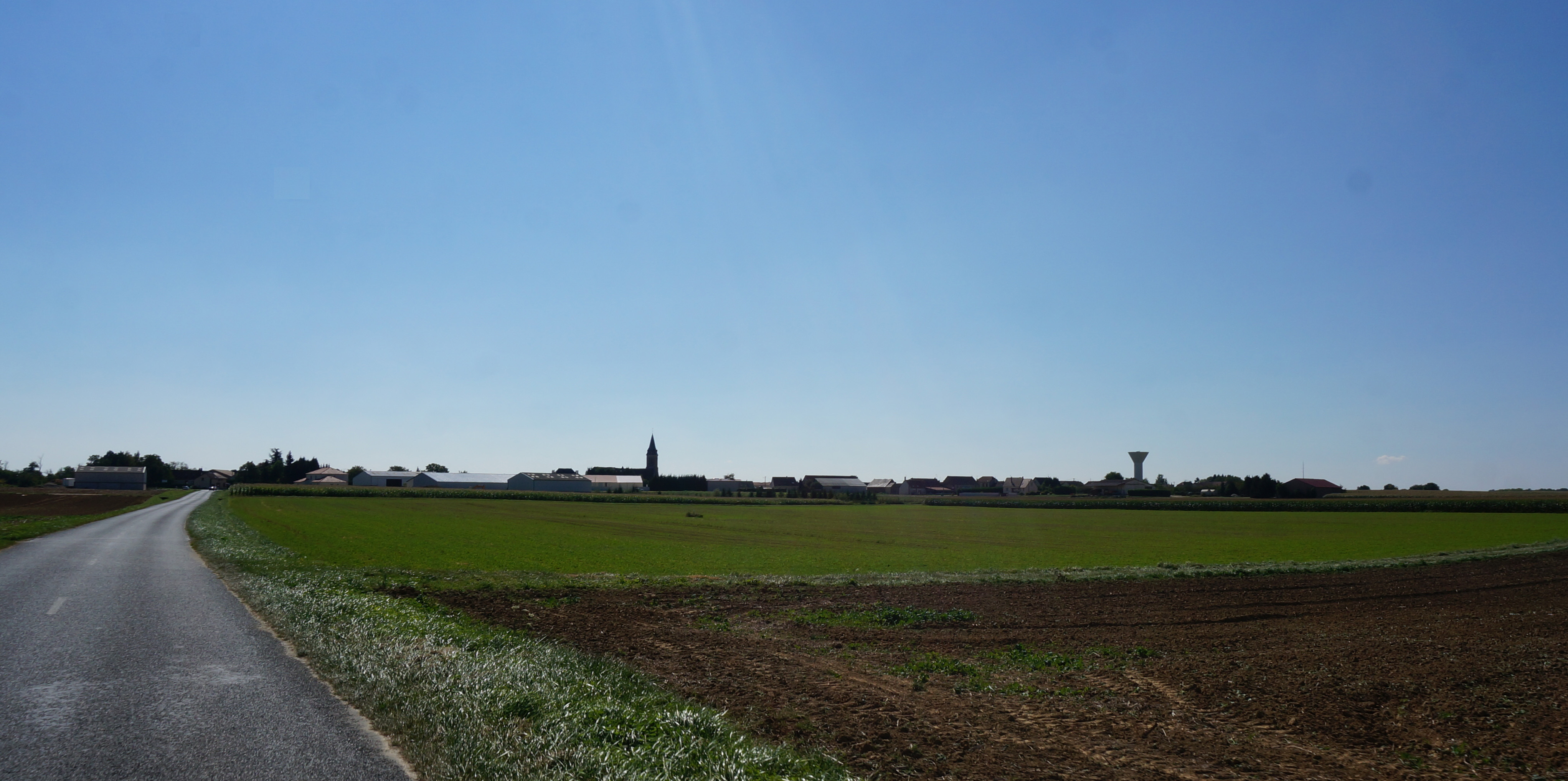 Key facts
Key facts
Located in subregion/area: Côte des Blancs / Sézannais
Vineyards and grape varieties: 140.3 hectares (346.7 acres), of which 63% Chardonnay, 22% Pinot Noir, and 15% Pinot Meunier.
Classification: “Autre cru” (87% and 85%).
Maps

The map is linked from Wikimedia Commons, and the geographical information originates from OpenStreetMap. The dotted white area corresponds to the vineyards, light yellow is other open terrain, orange is built-up areas, and green indicates forest.
Google Maps view with the villages in the Sézannais highlighted.
Clicking on a village opens a field to the left with a link to the village profile, if it exists.
Neighbouring villages within the Champagne appellation
North: Mondement-Montgivroux (part of the Val du Petit Morin area)
East: Allemant
Southwest: Sézanne
Comment: some of the communes on the map are not part of the Champagne appellation and therefore don’t have any village profiles.
The village
Broyes is located in the northeastern part of the Sézannais area, on rather flat land, just northeast of Sézanne, which is the central town of the area.
The Broyes commune covers 1524 hectares and has 365 inhabitants (as of 2014), referred to as Broyens and Broyennes.
Vineyards
The vineyards in the Broyes commune are mostly gathered in a band southwest and east of the village, on mild southeast-facing slopes. Chardonnay is the most common grape variety.
The current vineyard surface in the Broyes commune is 140.3 hectares (346.7 acres). There are 88.9 ha Chardonnay (63.4%), 30.6 ha Pinot Noir (21.8%), and 20.8 ha Pinot Meunier (14.8%). Numbers from CIVC, as of 2013. In 1997, the vineyard surface was also 135 ha. There are 65 vineyard owners (exploitants) in the commune.
Higher rating for Chardonnay
On the now defunct échelle des crus scale, where 100% = grand cru, 90-99% = premier cru, and 80-89% = ”autre cru”, a smaller number of villages were rated differently for white and black grapes, i.e., for Chardonnay (white) and for Pinot Noir and Pinot Meunier (black). The 12 villages in the Sézannais, including Broyes, were among these, with 87% for white grapes and 85% for black grapes, which in both cases meant ”autre cru”.
Champagne producers
Champagne growers
Producer status is indicated where known: RM = récoltant-manipulant, or grower-producers. RC = récoltant-coopérateur, growers that are cooperative members but sell Champagnes under their own name.
- Guy Adam (RC)
- Alain Caritte (RM)
- Olivier Collin (RC, Facebook page), has 7 ha of vineyards with 60% Chardonnay, 35% Pinot Noir, and 5% Pinot Meunier. The top Champagne is called Cuvée Célia and is composed of 44% Chardonnay, 37% Pinot Meunier, and 19% Pinot Noir (and is possibly vintage dated?). Below a presentation of the producer (French audio, no subtitles:
- http://www.youtube.com/watch?v=48tZ7_D3_xQ
- Yves Jacopé (RM), has 6 ha of vineyards. Started to produce their own Champagnes in the 1980s.
- Alain Jompierre (RC, Facebook page). Started to sell Champagnes under their own name in 2011. The range includes a vintage Champagne.
- Pierre Lebon (RC), has 3.8 ha of vineyards and an annual production of about 25 000 bottles. The range includes a vintage Champagne with varying proportions of Chardonnay, Pinot Meunier, and Pinot Noir.
- Petit-Bollot (RM)
- Vinot-Giguet (Facebook page)
Comment: the list may be incomplete.
Former producers
- Balahu de Noiron (NM), which now seems to be a brand owned by one of the major Champagne houses in Reims.
The church in Broyes, Église Saint-Martin. Picture linked from Wikimedia Commons (photo G.Garitan, 2014).
Links
- Wikipedia about this village in English, in French.
- Website of the Broyes commune.
- UMC’s village profile of Broyes.
- The Swedish version of this post.
© Tomas Eriksson 2017, last updated 2017-04-02

